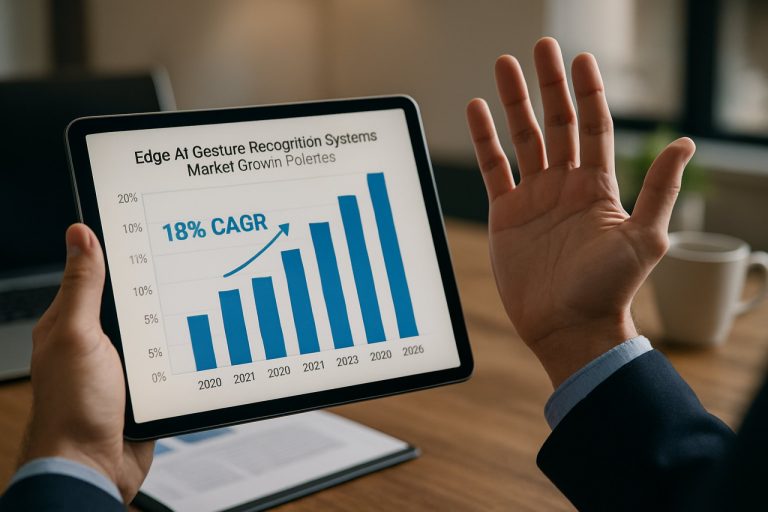
2025 Workflow Automation for Legaltech Market Report: Unveiling Growth Drivers, AI Integration, and Strategic Opportunities. Explore Key Trends, Forecasts, and Competitive Insights Shaping the Legaltech Automation Landscape.
- Executive Summary & Market Overview
- Key Technology Trends in Legaltech Workflow Automation
- Competitive Landscape and Leading Solution Providers
- Market Growth Forecasts and Revenue Projections (2025–2030)
- Regional Analysis: Adoption and Investment Hotspots
- Future Outlook: Emerging Use Cases and Innovation Pathways
- Challenges, Risks, and Strategic Opportunities for Stakeholders
- Sources & References
Executive Summary & Market Overview
Workflow automation in legaltech refers to the deployment of digital tools and platforms that streamline, standardize, and automate repetitive legal processes, such as document review, contract management, case tracking, and compliance monitoring. As of 2025, the legal sector is experiencing a significant transformation driven by the adoption of workflow automation solutions, which are reshaping traditional legal service delivery models and enhancing operational efficiency.
The global legaltech market, valued at approximately $28.5 billion in 2023, is projected to reach $45.7 billion by 2027, growing at a CAGR of 12.4% Statista. Workflow automation is a key growth driver within this sector, as law firms and corporate legal departments seek to reduce costs, minimize human error, and accelerate turnaround times. The increasing complexity of regulatory environments and the surge in digital documentation have further fueled demand for automated solutions.
Key players such as Relativity, Clio, and DocuWare are leading the market by offering platforms that integrate artificial intelligence (AI), machine learning, and robotic process automation (RPA) to automate tasks like e-discovery, contract analysis, and workflow routing. These technologies enable legal professionals to focus on higher-value activities, such as strategic advisory and client engagement, while routine tasks are handled efficiently by automated systems.
Adoption rates are particularly high among large law firms and in-house legal teams within highly regulated industries, including finance, healthcare, and technology. According to a 2024 survey by Thomson Reuters, over 68% of legal organizations have implemented some form of workflow automation, with 82% reporting measurable improvements in productivity and client satisfaction.
Despite these advancements, challenges remain. Integration with legacy systems, data security concerns, and the need for change management are cited as primary barriers to widespread adoption. However, ongoing investment in cloud-based solutions and the emergence of low-code/no-code platforms are expected to lower these barriers, making workflow automation increasingly accessible to small and mid-sized legal practices.
In summary, workflow automation is rapidly becoming a cornerstone of legaltech, driving efficiency, accuracy, and scalability across the legal industry. As technology matures and adoption broadens, the market is poised for sustained growth through 2025 and beyond.
Key Technology Trends in Legaltech Workflow Automation
Workflow automation in legaltech is rapidly transforming how law firms and legal departments operate, with 2025 poised to see accelerated adoption and innovation. This technology leverages artificial intelligence (AI), machine learning (ML), robotic process automation (RPA), and cloud-based platforms to streamline repetitive legal tasks, reduce human error, and improve overall efficiency.
One of the most significant trends is the integration of AI-driven document automation. Solutions now use natural language processing (NLP) to draft, review, and manage contracts, reducing turnaround times and minimizing risks associated with manual errors. For example, platforms like DocuWare and Clio are enhancing their offerings with advanced document assembly and e-signature workflows, enabling end-to-end automation from document creation to execution.
Another key trend is the rise of no-code and low-code workflow automation tools. These platforms empower legal professionals to design and deploy custom workflows without deep technical expertise. This democratization of automation is exemplified by solutions from Smokeball and LegalOps.com, which allow users to automate client intake, case management, and compliance tracking through intuitive drag-and-drop interfaces.
Integration capabilities are also advancing, with legaltech platforms increasingly offering seamless connections to third-party applications such as billing, CRM, and e-discovery tools. This interoperability is critical for creating unified, automated workflows that span multiple business functions. According to Gartner, by 2025, over 60% of legal departments will have adopted integrated workflow automation solutions, up from less than 30% in 2022.
Security and compliance automation is another area of focus. As regulatory requirements grow more complex, legaltech vendors are embedding compliance checks and audit trails directly into automated workflows. This ensures that every step in a legal process is documented and compliant with relevant standards, reducing the risk of costly errors or breaches.
Finally, the use of analytics and reporting within workflow automation is gaining traction. Automated systems now provide real-time insights into process bottlenecks, resource allocation, and case outcomes, enabling data-driven decision-making. As highlighted by Thomson Reuters, these analytics capabilities are becoming essential for legal teams aiming to demonstrate value and optimize operations in an increasingly competitive market.
Competitive Landscape and Leading Solution Providers
The competitive landscape for workflow automation in Legaltech is rapidly evolving, driven by increasing demand for efficiency, compliance, and cost reduction within legal operations. As of 2025, the market is characterized by a mix of established enterprise software vendors, specialized Legaltech startups, and major technology firms expanding their offerings into legal workflow automation.
Key players in this space include Relativity, which has expanded its e-discovery platform to include robust workflow automation features, and Clio, a leader in cloud-based legal practice management that integrates workflow automation for case management, billing, and client communications. Litera has also made significant strides, offering document lifecycle automation and workflow tools tailored for law firms and corporate legal departments.
Specialized providers such as Smokeball and Actionstep focus on small to mid-sized law firms, delivering end-to-end workflow automation for document assembly, calendaring, and task management. Meanwhile, Onit and Mitratech target enterprise legal departments with customizable workflow engines that automate contract lifecycle management, matter intake, and compliance processes.
Major technology companies are also shaping the competitive landscape. Microsoft has integrated workflow automation capabilities into its Microsoft 365 suite, enabling legal teams to automate document review and approval processes using Power Automate. Google Cloud and Amazon Web Services are increasingly providing infrastructure and AI-driven automation tools that Legaltech vendors leverage to enhance their solutions.
The market is witnessing consolidation, with larger vendors acquiring niche automation startups to broaden their capabilities. For example, Litera has acquired several workflow automation companies in recent years, strengthening its position in the legal document automation segment. According to Gartner, the trend toward platformization is accelerating, with clients seeking integrated solutions that combine workflow automation, document management, and analytics.
- Relativity, Clio, and Litera lead in comprehensive workflow automation for legal professionals.
- Onit and Mitratech dominate enterprise legal workflow automation.
- Microsoft, Google, and AWS provide foundational automation technologies increasingly adopted by Legaltech vendors.
- Market consolidation and platformization are key trends shaping the competitive landscape in 2025.
Market Growth Forecasts and Revenue Projections (2025–2030)
The workflow automation segment within the legaltech industry is poised for robust growth in 2025, driven by increasing demand for efficiency, cost reduction, and digital transformation across law firms and corporate legal departments. According to projections by Gartner, global legaltech spending is expected to reach $20 billion by 2025, with workflow automation solutions accounting for a significant share of this investment. The adoption of workflow automation tools—such as document automation, e-discovery, contract lifecycle management, and case management platforms—is anticipated to accelerate as organizations seek to streamline repetitive tasks and improve compliance.
Market research from Grand View Research estimates that the legal workflow automation market will experience a compound annual growth rate (CAGR) of approximately 12% in 2025, outpacing the broader legaltech sector. This growth is underpinned by the increasing complexity of legal processes, rising volumes of digital documentation, and the need for real-time collaboration among legal professionals. The North American market is expected to maintain its dominance, accounting for over 40% of global revenue, while Europe and Asia-Pacific are projected to see accelerated adoption due to regulatory changes and digitalization initiatives.
Revenue projections for 2025 indicate that workflow automation solutions will generate upwards of $4.5 billion globally, with enterprise clients—particularly in the financial services, healthcare, and technology sectors—driving the majority of demand. Leading vendors such as Relativity, Clio, and DocuWare are expected to expand their market share through enhanced AI-driven features and integration capabilities. Additionally, the proliferation of cloud-based platforms is lowering barriers to entry for small and mid-sized law firms, further fueling market expansion.
- Key growth drivers in 2025 include increased regulatory scrutiny, the need for data security, and the shift toward hybrid work environments.
- Challenges such as data privacy concerns and integration with legacy systems may temper growth but are being addressed through ongoing innovation.
Overall, 2025 is set to be a pivotal year for workflow automation in legaltech, with strong revenue growth and widespread adoption positioning the segment for continued expansion through the end of the decade.
Regional Analysis: Adoption and Investment Hotspots
The adoption and investment landscape for workflow automation in legaltech is marked by significant regional disparities, driven by regulatory environments, digital maturity, and the presence of legal innovation hubs. In 2025, North America continues to lead as the primary hotspot, with the United States accounting for the largest share of legaltech investments and workflow automation deployments. Major law firms and corporate legal departments in cities like New York, San Francisco, and Chicago are accelerating adoption, spurred by the need to reduce operational costs and improve compliance. According to Statista, the U.S. legaltech market is projected to surpass $20 billion in value by 2025, with workflow automation comprising a significant portion of this growth.
Europe is emerging as a strong secondary market, particularly in the United Kingdom, Germany, and the Nordics. The UK, with London as a legal innovation hub, benefits from a robust startup ecosystem and supportive regulatory frameworks. The Law Society of England and Wales reports that over 60% of large UK law firms have implemented some form of workflow automation, with investment in AI-driven document review and contract management solutions rising sharply. Germany and the Nordics are also seeing increased adoption, driven by cross-border legal work and a focus on data privacy compliance.
Asia-Pacific is witnessing rapid growth, led by Australia, Singapore, and increasingly, India. Singapore’s government-backed initiatives, such as the Ministry of Law’s Legal Technology Platform, are fostering a conducive environment for legaltech startups and workflow automation pilots. Australia’s mature legal market is investing in automation to address talent shortages and rising client expectations. India, while still nascent, is experiencing a surge in legaltech startups targeting workflow automation for high-volume, repetitive legal processes, as noted by NASSCOM.
Investment activity mirrors these adoption trends. According to CB Insights, North America and Europe together accounted for over 75% of legaltech funding rounds in 2024, with workflow automation startups attracting the largest deals. Asia-Pacific’s share is growing, with notable investments in Singapore and India. The Middle East and Latin America remain in early stages, but local initiatives and regulatory reforms are expected to drive future growth.
Future Outlook: Emerging Use Cases and Innovation Pathways
The future outlook for workflow automation in Legaltech is marked by rapid innovation and the emergence of new use cases that are set to redefine legal service delivery by 2025. As law firms and corporate legal departments continue to face mounting pressure to increase efficiency, reduce costs, and deliver more value to clients, workflow automation is evolving from simple document management to sophisticated, AI-driven process orchestration.
One of the most significant emerging use cases is the integration of generative AI with workflow automation platforms. By 2025, leading Legaltech providers are expected to offer solutions that not only automate repetitive tasks but also generate legal documents, summarize case law, and provide predictive analytics for litigation outcomes. This convergence is anticipated to accelerate contract lifecycle management (CLM), due diligence, and e-discovery processes, reducing turnaround times and minimizing human error. According to Gartner, over 50% of legal departments will have adopted workflow automation tools with embedded AI capabilities by 2025.
Another innovation pathway is the rise of no-code and low-code platforms tailored for legal professionals. These platforms empower lawyers and paralegals to design and deploy custom workflows without deep technical expertise, democratizing automation and enabling rapid adaptation to changing regulatory requirements. Thomson Reuters highlights that such tools are driving a shift towards self-service legal operations, where business users can initiate and track legal requests, further streamlining internal processes.
Interoperability and integration with enterprise systems are also becoming critical. By 2025, workflow automation solutions are expected to offer seamless connectivity with document management, billing, and client relationship management (CRM) systems, creating unified legal operations ecosystems. This trend is supported by Legaltech News, which notes that interoperability is a key driver for adoption among large law firms and multinational corporations.
Looking ahead, the innovation pathways for workflow automation in Legaltech will likely include advanced analytics for risk assessment, real-time compliance monitoring, and the use of blockchain for secure, auditable workflows. As regulatory complexity increases and client expectations evolve, the ability to rapidly automate, adapt, and innovate will be a defining factor for legal organizations seeking competitive advantage in 2025 and beyond.
Challenges, Risks, and Strategic Opportunities for Stakeholders
Workflow automation in legaltech is rapidly transforming how legal services are delivered, but it presents a complex landscape of challenges, risks, and strategic opportunities for stakeholders in 2025. As law firms, corporate legal departments, and technology providers increasingly adopt automation tools, they must navigate several critical issues to maximize value and minimize disruption.
Challenges and Risks:
- Data Security and Privacy: Legal workflows often handle sensitive client information. Automating these processes increases exposure to cybersecurity threats and data breaches, requiring robust compliance with regulations such as GDPR and CCPA. Failure to secure automated workflows can result in reputational damage and regulatory penalties (American Bar Association).
- Integration Complexity: Many legal organizations operate with legacy systems. Integrating new automation platforms with existing infrastructure can be costly and technically challenging, often leading to workflow disruptions and increased IT overhead (Gartner).
- Change Management: Resistance from legal professionals accustomed to traditional processes can slow adoption. Training, cultural shifts, and clear communication are essential to overcome skepticism and ensure successful implementation (Thomson Reuters).
- Quality and Accountability: Automated workflows may introduce errors if not properly configured or monitored. Ensuring accountability and maintaining high-quality legal work remains a top concern, especially in high-stakes matters.
Strategic Opportunities:
- Efficiency Gains: Automation can reduce time spent on repetitive tasks such as document review, contract management, and e-discovery, freeing legal professionals to focus on higher-value work (McKinsey & Company).
- Scalability and Cost Reduction: Automated workflows enable legal service providers to scale operations without proportional increases in headcount, driving down costs and improving profitability.
- Enhanced Client Service: Faster turnaround times and improved accuracy can differentiate firms in a competitive market, leading to stronger client relationships and new business opportunities.
- Data-Driven Insights: Automation platforms generate valuable data on workflow efficiency and legal outcomes, empowering stakeholders to make informed strategic decisions and continuously optimize processes.
In 2025, stakeholders who proactively address these challenges and leverage automation’s strategic benefits will be best positioned to thrive in the evolving legaltech landscape.
Sources & References
- Statista
- Clio
- DocuWare
- Thomson Reuters
- Smokeball
- Litera
- Actionstep
- Microsoft
- Google Cloud
- Amazon Web Services
- Grand View Research
- Law Society of England and Wales
- Ministry of Law
- NASSCOM
- McKinsey & Company



